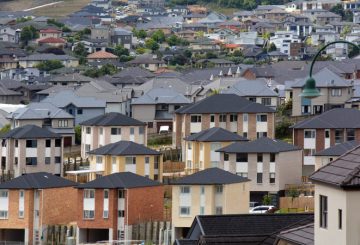Primary and intermediate schools fear a government review is threatening foreign enrolments worth more than $20 million a year in fees.
Sector leaders said the review was a complete surprise and the government had not explained what it wanted to change.
Primary and intermediate schools are a small but growing part of New Zealand’s international education sector.
In 2019, 324 primary and intermediate schools enrolled 5225 children whose families paid $24 million in tuition fees.
Some of the children came in school groups for a couple of weeks, others stayed all year with a parent or legal guardian while those over the age of 10 were allowed to live with local families.
The principal of Pillans Point School in Tauranga, Matt Simeon, said people were worried by the announcement of a review.
“It’s come as a bit of a left-field shock. We’d heard murmurings probably four or five weeks ago but for it to actually come out in writing that we want to review the provision of international education in primaries and intermediates, it’s got a lot of us wondering what is going on here and why,” he said.
He said principals suspected the Ministry of Education did not like them enrolling such young children, but they did not know what changes it might want to make and it needed to tell them.
“Are you thinking of age changes or age restrictions or are you thinking of not having them at all because that would have huge impacts.”
Simeon said schools used any profit from their students to pay for extra teacher aides and a drop in enrolments would cause job losses.
Government rules required any foreign student under the age of 10 to live with a legal guardian or parent.
John van der Zwan from the Schools International Education Business Association said that ensured a good level of care for the children and it had helped the primary school part of the sector weather the pandemic better than others.
He said there was a global trend of families wanting an English-language education for their children and New Zealand was attracting children from China and Korea in particular.
He said many of the children continued their studies into secondary school and on to university which represented good value for New Zealand.
Van der Zwan said the government’s review was a complete surprise.
“This has come out of the blue for us, it is not something that we were expecting,” he said.
The principal of Whakarongo School in Palmerston North, Jaco Broodryk, said his school currently had three foreign students, but in a normal year would have as many as 10.
He said the enrolments helped the school’s students develop cultural competencies and the financial benefits of the scheme extended into the wider community.
Broodryk said two of New Zealand’s competitors for foreign enrolments, Australia and Canada, did not allow the enrolment of primary-aged foreign students, and that gave New Zealand an advantage.
He said international students who had spent time in primary schools were better prepared for study at secondary schools.
Education Minister Chris Hipkins said the review was part of moves to improve New Zealand’s international education sector.
“There is an opportunity to accelerate and embed the ‘high quality, high value’ strategic shift signalled in the International Education Strategy while border restrictions are in place,” he said.
“This includes reviewing our current policy settings for primary and intermediate level international students to ensure they remain fit-for-purpose.
“The Ministry of Education is currently developing advice on this issue and expects to engage with the sector on potential options ahead of formal public consultation in late 2021.
“No decisions have been made yet about changes to policy that affect primary and intermediate level international students.”
SOURCE: RNZ News






























































